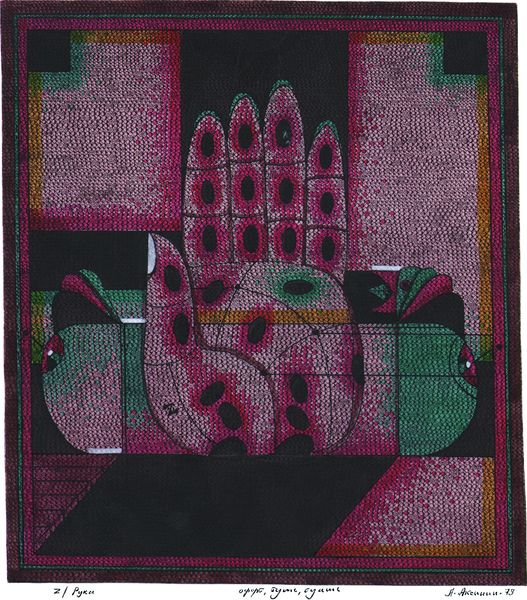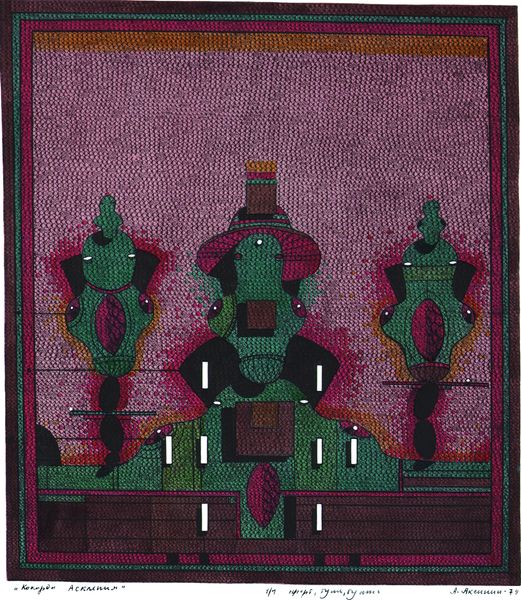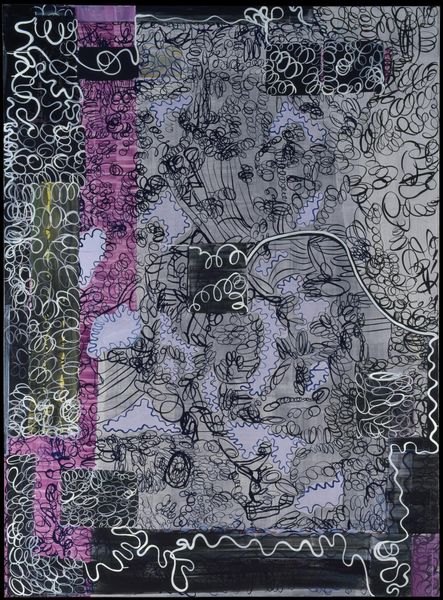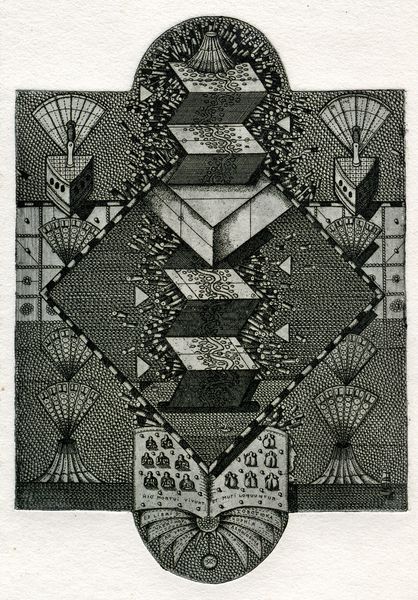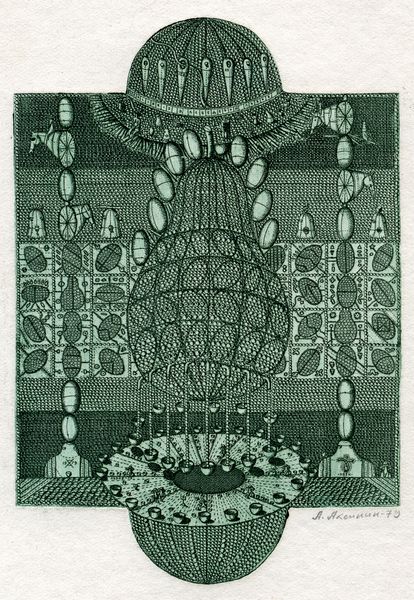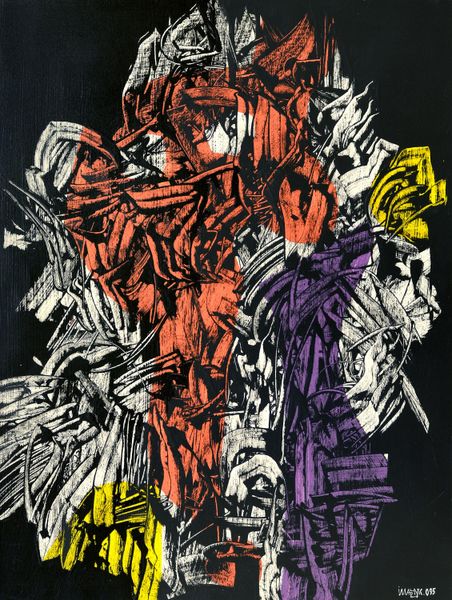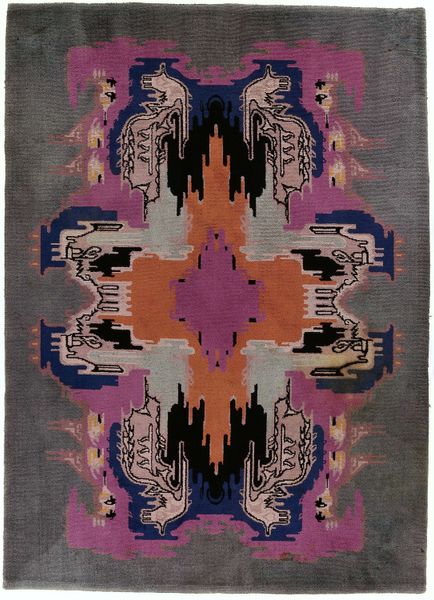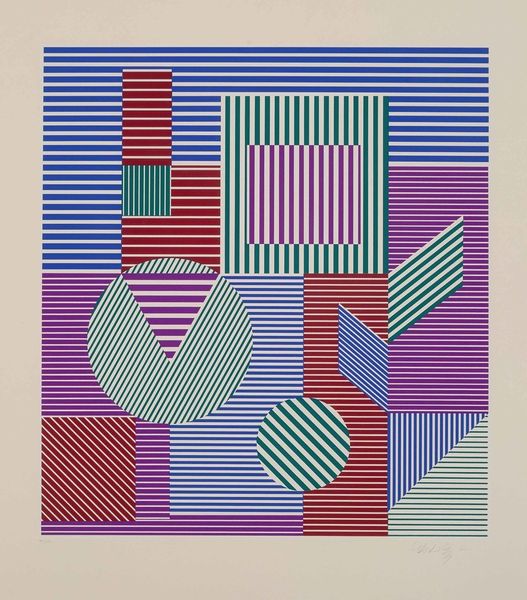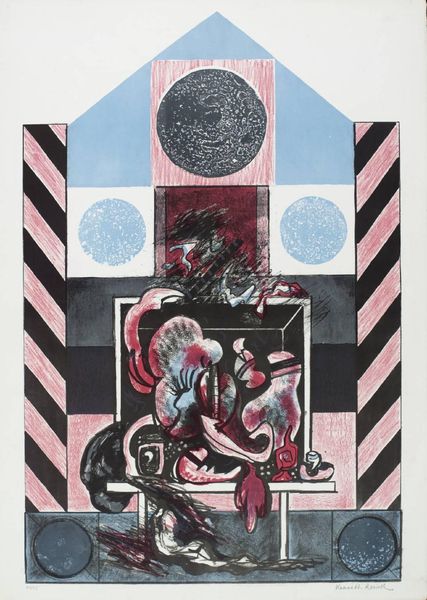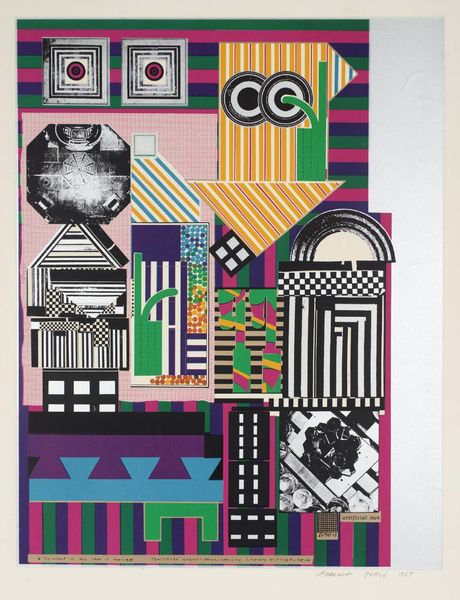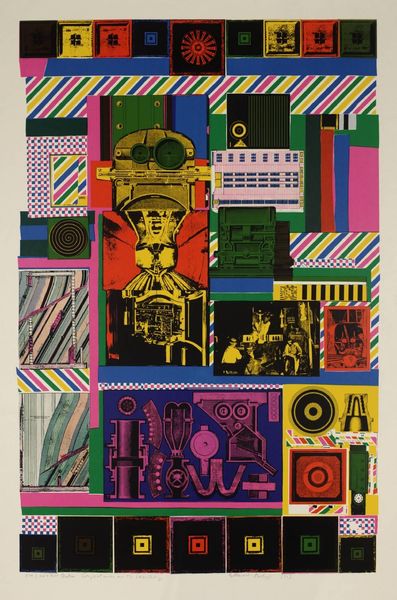
drawing, graphic-art, paper
#
drawing
#
graphic-art
#
pop art
#
soviet-nonconformist-art
#
paper
#
abstract pattern
#
geometric
#
geometric-abstraction
#
abstraction
#
soviet-nonconformist-art
Copyright: Oleksandr Aksinin,Fair Use
Curator: Today, we're looking at "Aquarium" by Oleksandr Aksinin, created in 1979. It’s a fantastic example of his graphic work and fits within the Soviet Nonconformist Art movement. Editor: My first impression is a strange kind of serenity despite all the geometry and almost hypnotic pattern-work. It makes me think of deep-sea creatures lurking just out of sight, but with a cool 70s vibe. Curator: Aksinin often used geometric abstraction, something pretty unusual in the context of the heavily controlled artistic environment of the Soviet Union. His work challenges the officially sanctioned style of Socialist Realism. Editor: Exactly. And that choice isn't neutral. Abstraction became a way to subvert power; these artists, in their commitment to abstraction and pattern-making, were resisting ideological control and making their mark. It becomes a language of coded resistance. Curator: Indeed. And the title “Aquarium,” paired with the abstracted shapes, hints at a hidden world, perhaps a metaphor for the inner lives and suppressed freedoms of Soviet citizens. There's a tension between the seemingly playful title and the underlying commentary. Editor: I’m struck by how he plays with layering – the composition feels almost architectural in its structure. This might reflect not just the individual search for freedom, but also social struggles as these artists built solidarity with one another during an era of oppression. The density of those intricate lines and dots...that requires meticulous care. It reminds me of the time and attention dissidents put in connecting and caring for one another. Curator: It is meticulous. What do you make of its relation to something like Pop Art? Is it simply visually reminiscent? Editor: Not simply visually. I think it has a connection. Pop Art emerged as an interrogation of consumer culture, a celebration of accessibility. But for Aksinin, working under vastly different social circumstances, perhaps its use represents a yearning for these possibilities; or rather, reveals something essential in its language—that images are always coded, politicized and contextual. Curator: That’s a nuanced way to consider these dynamics. This piece clearly exists in a complex socio-political milieu, where aesthetic choices became potent forms of expression and defiance. Editor: Ultimately, works like “Aquarium” are compelling because they showcase how artists can creatively navigate and subvert even the most oppressive conditions. And invite us to think about the continued legacies of political action and image making today.
Comments
No comments
Be the first to comment and join the conversation on the ultimate creative platform.
